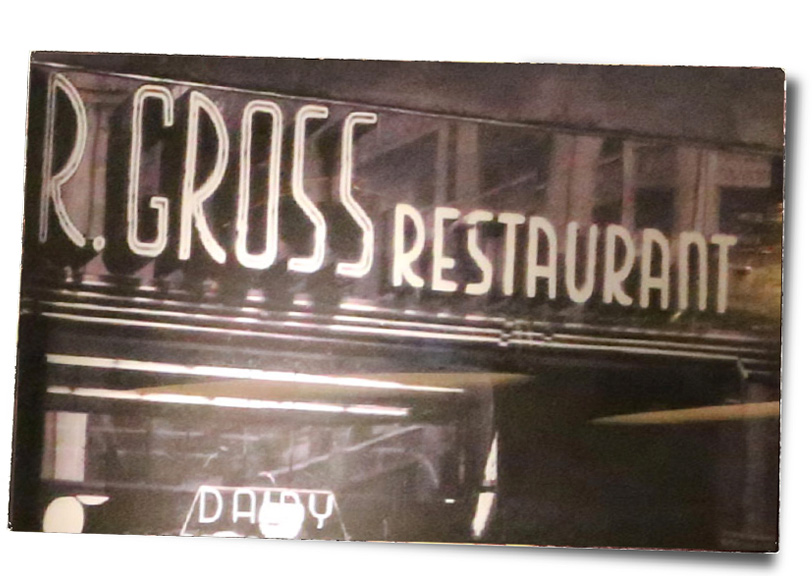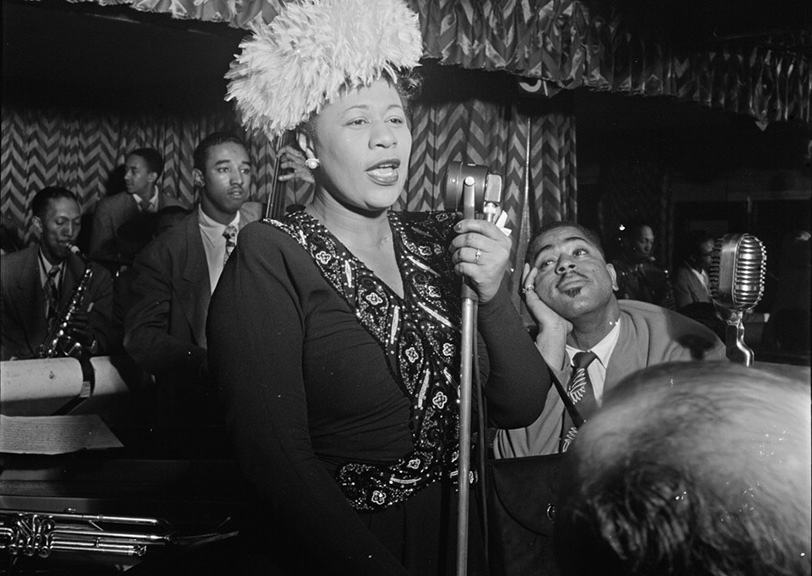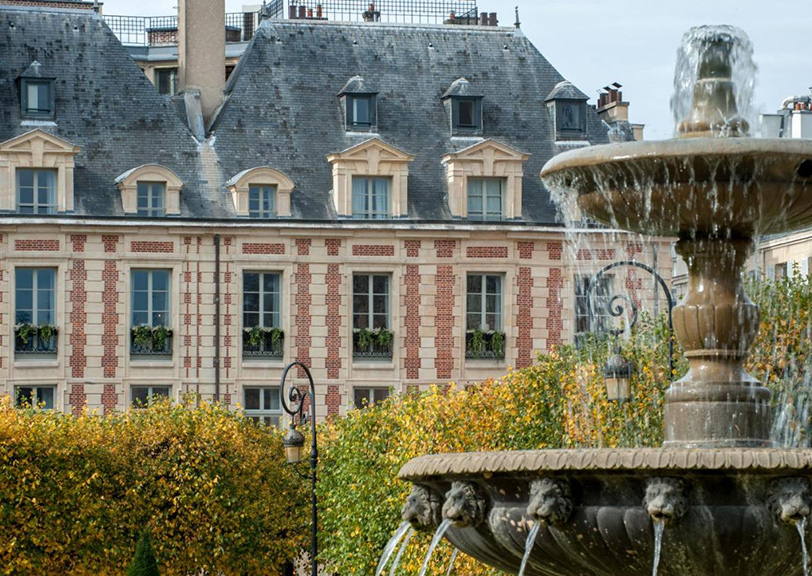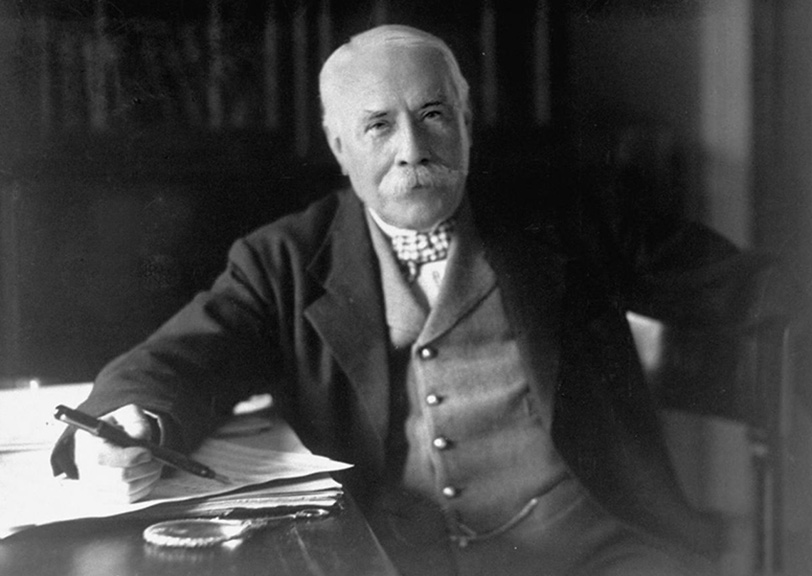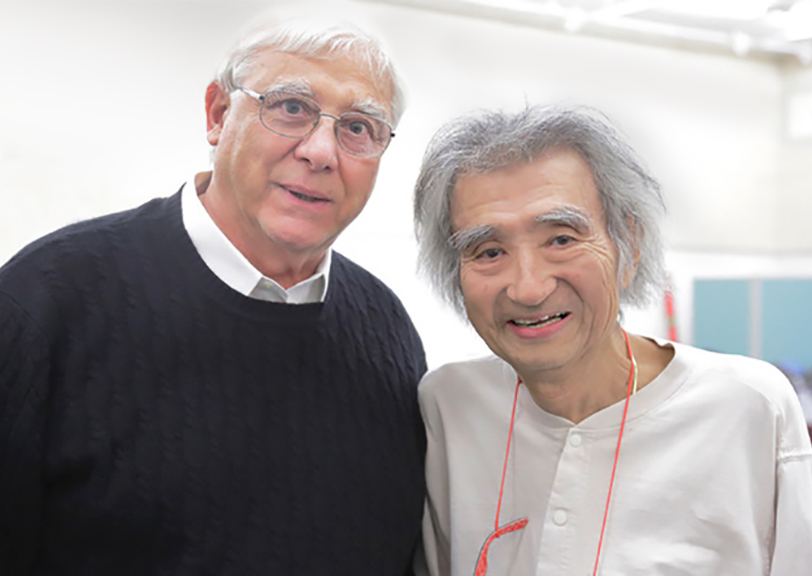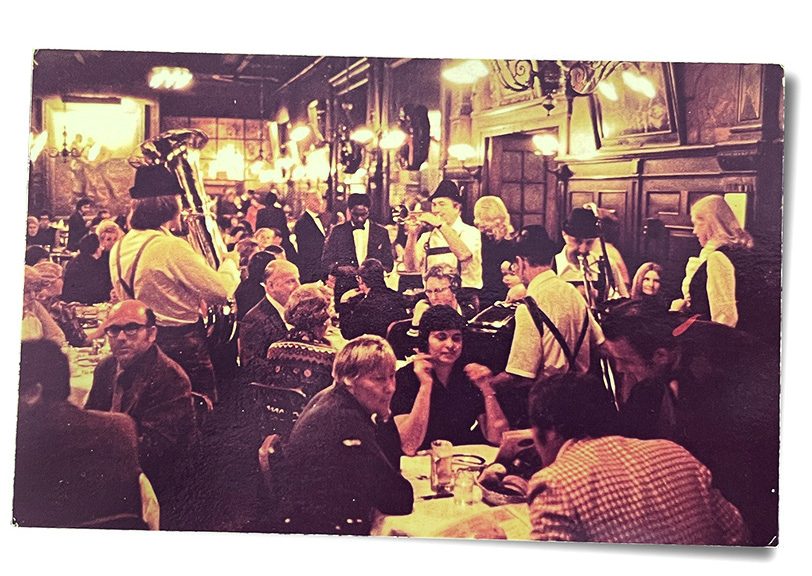ENTER YOUR EMAIL TO RECEIVE OUR WEEKLY NEWSLETTER
Pina Bausch’s Power-Packed “Rite of Spring”
“Visceral” and “ferocious,” it jumps off the stage in the Drill Hall of that Gilded Age enormity, the Park Avenue Armory
By George Gelles

On their toes, aslant: A procession of dancers from 14 African nations perform “The Rite of Spring’s” Jeu de Rapt (Ritual of Abduction). Photo by Maarten Vanden Abeele © Pina Bausch Foundation.
. . . . . . . . . . . . .
January 2, 2024
Philippine Bausch—Pina, universally—is among the few contemporary dancer-choreographers whose repertory not only outlives them but garners ever-greater praise. If proof were needed, consider the recent two-week, sold-out engagement at the Park Avenue Armory of Bausch’s “Rite of Spring,” which I was fortunate to see twice.
Though dear to those who know her work, Bausch is hardly a household name. So who was Pina Bausch? She hailed from the forested Bergisches Land of the German state North Rhine–Westphalia, and her lifespan was short, just shy of 69 years–her dates were 1940 to 2009. A precocious performer, as a child she entertained guests, bidden to do so or not, in the hotel owned by her father. At age 14 she entered the prestigious Folkwangschule, in Essen, to study with Kurt Jooss, master of expressionist dance, and then in 1960 she came to New York for further study at Juilliard.
Antony Tudor, the great choreographer who was teaching back then at Juilliard, recognized Bausch’s gifts and invited her to join the ballet troupe at the Metropolitan Opera, which he led. She went on to dance with the Paul Taylor Dance Company and then with the Paul Sanasardo Company, both in New York.
Back in Germany in 1962, Bausch joined the Folkwang Ballet, Jooss’s company There, as performer and de facto assistant, she would succeed Jooss on his retirement. Renaming the company the Tanztheater Wuppertal in 1969, the troupe was now an independent entity that gave Bausch’s inspiration free rein.
As a performer, she was her finest interpreter, as we see on many videos, and as a maker of dances, she had endless imagination and prolific output. She created 55 pieces, 47 of which were made for her Tanztheater Wuppertal. The Pina Bausch Foundation, established by her son, Salomon, to preserve his mother’s legacy, charts her course.
Her works embrace a stylistic gamut ranging from the expressionistic “Café Müller” to the macabre “Bluebeard” to the classical operas “Orpheus und Eurydice” and “Iphigenia auf Tauris” to the autobiographical “Nelken,” a work instantly notable for a stage covered in pink carnations (in German, Nelken).
“The Nelken Line” is something else again. A line dance whose kernel of inspiration is extracted from “Nelken,” it has a tone and intention that could not differ more from their source. Participants—numbering from two to 20 to 200—follow the leader as she or he ambles casually through the city, through the country (it really doesn’t matter); their hands perform simple gestures symbolizing the four seasons. “The Nelken Line” has been seen worldwide, and the Pina Bausch Foundation provides a sampling of its iterations. It’s winning and simple to learn. Here, have a go at it, as instructed by longtime Tanztheater member Julie Anne Stanzak.
If “The Nelkin Line” is a walk in the park, “The Rite of Spring” is a punch in the gut. Set to Igor Stravinsky’s seminal score, it’s fair to say, much of the 20th century’s concert music was composed in response to this pathbreaking masterpiece. “The Rite” was first seen hereabouts in 1984 at the Brooklyn Academy of Music. Announcing the engagement of Bausch and Tanztheater Wuppertal, Harvey Lichtenstein, then executive director of BAM and a visionary to his core, remarked that “Pina Bausch is one of the most original, innovative artists of the 20th century. Like Martha Graham, George Balanchine, and Merce Cunningham, she has set standards, charted new directions, and exerted great influence.” His words hold up well.
Though Bausch was a musical sophisticate, no score can have been more daunting. “The Rite” was first choreographed by Vaslav Nijinsky for Serge Diaghilev’s Ballets Russes, and its 1913 Paris premiere was a succès de scandale that is said to have caused an audience riot.
Some attribute the disruption to Stravinsky’s score. In “The Unanswered Question: Six Talks at Harvard,” Leonard Bernstein perhaps too flippantly refers to one passage that’s “never been topped for sophisticated handling of primitive rhythms” and further says that the work has “also got the best dissonances anyone ever thought up, and the best asymmetries and polytonalities and polyrhythms and whatever else you care to name.” Others, including composers and critics who attended the premiere, fault Nijinsky’s contribution. In his autobiography, Stravinsky recalls many “painful incidents” between choreographer and dancers, and remarks of Nijinsky that “the poor boy knew nothing of music … [he] had been saddled with a task beyond his capacity.” The New York Times later noted that “it was not Stravinsky’s music that did the shocking. It was the ugly earthbound lurching and stomping devised by Vaslav Nijinsky.”
Since its first performance, there have been more than 100 reinterpretations of “The Rite,” from one set in the American Wild West to one set in Gangland. The spectacle first came to America in 1930, when Leopold Stokowski led the Philadelphia Orchestra and an anonymous dance troupe in the 1920 version created by Léonide Massine for the Ballets Russes; it was Diaghilev’s replacement for Nijinsky’s debacle. In an inspired bit of casting, Stokowski’s Chosen One, central to the piece, was Martha Graham, already prominent if not yet preeminent as a force in modern dance.
In 1987 the Joffrey Ballet staged a reconstruction of the Stravinsky-Nijinsky original. It accurately reflects both the subtitle of Stravinsky’s score—“Pictures of Pagan Russia in Two Parts”—and the scenario devised by Nicholas Roerich, designer of sets and costumes for the first “Rite.”
To my eyes, it’s at best an antiquarian exercise. Though true to score and scenario, its episodic structure is static, its theatrics preserved in amber. It recalls nothing so much as the dioramas of flora and fauna at the American Museum of Natural History, in some sense accurate but in no sense alive. Watch it and decide for yourself. (Link to the Joffrey Ballet “The Rite of Spring.”)
Bausch’s interpretation, at the Armory, jumps off the stage, visceral, ferocious. The piece is danced on a rectangle measuring 14 meters wide by 17 meters deep, roughly 46 feet by 56 feet, and before the piece begins, stagehands dump peat from wheeled box trucks onto the stage—7,650 liters, or almost 17,000 pounds of soil—and they rake it smooth as a carpet. Two purposes are served: The peat establishes the primacy of the earth as the site of all action, a notion shared by both Bausch and Stravinsky, and it gives the performers a more buoyant surface for dancing than the customary wooden floor. Bausch favored similar gestures; think of “Nelken,” danced in a field of carnations, or “Bluebeard,” on desiccated leaves.
In a pose of submission: The Chosen One, i.e., The Sacrificial Victim, caught and recumbent. “The Rite of Spring.” Photo by Maarten Vanden Abeele © Pina Bausch Foundation.
. . . . . . . . . . . . .
Before looking at the opening moments, it is worth noting that Bausch’s title is not Stravinsky’s. His “Le Sacre du Printemps” (“The Rite of Spring”) is now her “Das Frühlingsopfer” (“The Sacrifice of Spring”). The differing emphasis is profound, as the dance will reveal, but here we will refer to Bausch’s work as “The Rite.”
Our eyes see total darkness, and as light dawns gradually, we spot a woman downstage stretched prone on a swath of crimson. Like all the women until the work’s denouement, she wears an off-white slip, spaghetti straps on top, its length below the knees. Though the fabric on which she lies looks like nothing more than a beach towel, it plays a dramatic role throughout the piece that’s equal to the dancers’.
A shaft of light shoots across the stage left to right, and a woman sprints its length. Another woman then emerges to our left and darts cross-stage into a pool of illumination. Two more women emerge in another bright circle. The female ensemble, now fully on stage, seem to wander aimlessly before focusing attention on their colleague on the crimson cloth. They appear to pay reverence, and their presence invests the fabric with special meaning.
And then we’re off, as we segue into “Augurs of Spring.” Here you’ll see the women execute a movement that, slightly varied, returns throughout. With feet planted perhaps a yard apart and arms hanging at the body’s side, they let gravity pull their torsos downward, a motion that in turn triggers the knees to bend. If Bausch’s “Rite” has a visual motto, this is it.
In the dance of the springtime auguries, women’s bodies wail, tilt, keen. The men, bare-chested and wearing black dance pants, soon join them, but within moments men and women separate into tribes. And tribal it is.
“The Rite” revisits one of Bausch’s favored themes, the rift between the sexes, and she depicts the struggle with violent intensity. In “The Ritual of Abduction,” the men are a brutal force in a dance that is highly sexualized.
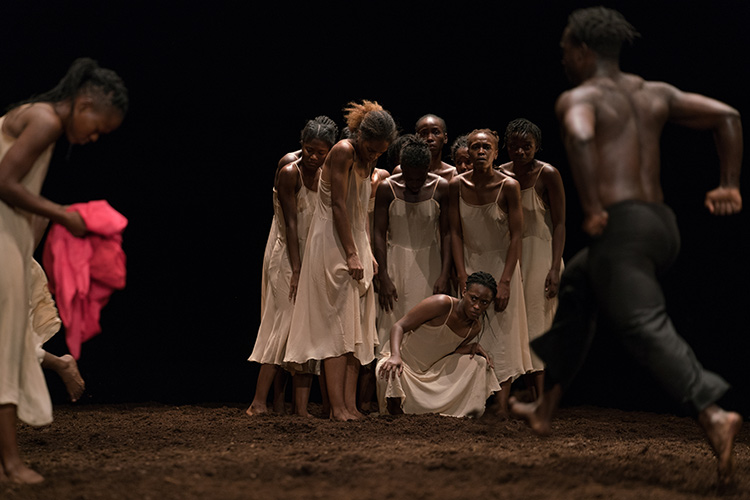
Awaiting her fate: The Chosen One, surrounded. “The Rite of Spring.” Photo by Maarten Vanden Abeele © Pina Bausch Foundation.
. . . . . . . . . . . . .
Let me allow a Canadian colleague, Deirdre Kelly, to share her impressions, which mirror my own: When the dancing begins, “it is terrifying. Bodies shake and flail; limbs slice through the surrounding space with the lethal precision of knives. Everyone in it is a victim, pummeled by some greater, barbaric force.” A round dance, “Rondes de Printemps,” soon provides repose, but the piece then picks up a ferocious head of steam until the final “Sacrificial Dance,” which a woman now in red, the Chosen One, dances to her death.
Stravinsky’s “Rite” was the perfect score for Bausch. The music is raw and flaunts conventions, just as does Bausch’s choreography. In truth, Bausch was often not a choreographer in the usual sense. Take, for instance, her “Palermo Palermo”; it begins with the collapse of a cinderblock wall–talk about a coup de théâtre!—and goes on to portray incidents and imagery that members of the Bausch company observed on a trip to the Sicilian capital. It’s a theater piece performed by dancers.
Bausch, however, could freely speak a more familiar tongue; in her staging of Gluck’s “Orpheus,” the “Dance of the Blessed Spirits” is flat-out gorgeous, with the women’s port de bras, the carriage of their arms, as elegant as in any ballet. In “The Rite,” though, she goes for dramatic, dynamic sweep, and piles gesture upon repetitive gesture; both gambits complement Stravinsky, and compliment him, too. At her Tanztheater Wuppertal, you’ll perhaps find “mehr Theater als Tanz,” more theater than dance, and this might help explain why eminent filmmakers held Bausch in high regard; she appeared in works by both Federico Fellini (And the Ship Sails On) and Pedro Almodóvar (Talk to Her).
Here is Bauch’s “Rite” performed by her Tanztheater in 1978.
The recent Armory presentation, however, was not performed by the Tanztheater, but by an ad hoc ensemble of some three dozen dancers, a group chosen from 135 who auditioned, its members representing 14 different African nations. Assembling the group was noteworthy in itself. As Kofi Agawu reminds us in his invaluable study titled “Representing African Music”—a Ghanaian via Oxbridge, Agawu capped a storied academic career as Distinguished Professor at the Graduate Center at CUNY, the City University of New York—Africa is a continent, not a country. The dancers participating in “The Rite” would have joined the project with differing traditions, differing languages, differing expectations.
That they coalesced into a brilliant ensemble was a tribute to each of them and to the Bausch organization. I’ll cite only one dancer by name: Lucieny Kaabral, from the island nation of Cape Verde, danced the Chosen One with searing intensity at both performances I saw. (And to give an example of Bausch’s attitude of “Waste not, want not,” I’ll mention that the Chosen One’s final, fatal gesture—she falls face first and lifeless, 90 degrees to the ground, a clock’s hour hand precipitously dropping from 12 to 3–became the basis for another piece by Bausch; “The Fall Dance” is a duet in which a woman repeatedly falls face first, averting calamity when caught by her partner with no time to spare.)
This setting of “The Rite” was prepared at the École des Sables (Dancing in the Sands), a center—the center—for traditional and contemporary African dance. Located on the Atlantic coast in Toubab Dialaw, a fishing village an hour south of Senegal’s capital, Dakar, it was founded in 1998 by the great Germaine Acogny, whose career as a creative force in African dance, as performer, choreographer, educator, and inspiration, is unequaled. The performance was ready for a world tour in 2020, but the spread of COVID forced postponement. Fortuitously, before heading back to their homes to wait for more propitious times, the dancers had a final rehearsal on the beach, and their performance was captured in an extraordinary documentary, Dancing at Dusk.
Like all performances of Bausch’s “Rite,” it was danced not to “live” music but to the vivid performance of “The Rite of Spring” recorded in 1969 by the Cleveland Orchestra, led by Pierre Boulez. A conductor of immaculate sensibilities and flawless technique, Boulez enjoyed the collaboration here of, among many others, flutist Maurice Sharp, oboist John Mack, clarinetist Robert Marcellus, bassoonist George Gosling, and hornist Myron Bloom, each of whom was royalty among American orchestral musicians.
Film and video were kind to Bausch. Her most consequential engagement with these allied arts were not her silver-screen cameos with Almodóvar and Fellini, but her collaboration with the great filmmaker Wim Wenders, whose imprint was substantial on the so-called New German Cinema in 1960s and ’70s.
Wenders professed admiration for Bausch in 1985, and by the time they discussed their documentary, he had professionally done it all: won the Palme d’Or, the Cannes Film Festival’s top prize, for Paris, Texas; opened eyes and ears to Cuban music with his much-honored Buena Vista Social Club; directed Carmen at the Berlin State Opera; made music videos for U2 and Talking Heads; and shot commercials for the fashion house Jil Sander, among much else.
Bausch and Wenders planned all aspects of their documentary, which would include generous excerpts from four major pieces–“The Rite of Spring,” “Café Müller,” “Kontakthof,” and “Vollmond”—as well as interviews and excerpts from other dances. Shortly before shooting was to start, Bausch died. Rather than abandoning the project, Wenders was persuaded by Tanztheater members to continue, and his Pina is full of insights and delights.
Should you choose to continue online, don’t miss Pina Bausch and New York.
Made by Brazilians Guto Barra and Tatiana Issa, the film features interviews and voiceovers by Paul Sanasardo, Bausch’s early New York mentor, and by Malou Airaudo, a mainstay of the Tanztheater for whom Bausch created the role of the Chosen One in the premiere of “The Rite.” It includes film and photographs of Bausch at Juilliard working with Antony Tudor; of Bausch dancing excerpts from the choreographic exotica created by American iconoclast La Meri (born Russell Meriwether Hughes Jr.); of splendid footage of Manhattan as it once was.
Baush’s “Rite” was seen in the Wade Thompson Drill Hall, the Armory’s premiere performance space. With a total of 55,000 square feet, free of structurally obtrusive pillars or posts, it makes you think of Grand Central Terminal’s Main Concourse—though with 35,000 square feet, the Concourse is hardly as capacious as the Drill Hall.
Brilliant use of the space was made by the Merce Cunningham Dance Company in 2011, when it concluded its two-year Legacy Tour with a final Event in the Drill Hall. It was not just the end of the tour but the last-ever performance of an ensemble that set the highest standards of artistic probity since its creation in 1953.
The Event’s audience could stay stationary or wander among three different stages, on each of which Cunningham dancers performed pieces from their rich repertory. The evening was brilliantly described in The New York Times by Alastair Macaulay, the paper’s former dance critic. (Link to the NYT article: For Cunningham Dance Company, Contentment and Finality at Armory.)
I thought of this Event while watching Bausch’s “Rite.” Designed for performance in a conventional theater whose stage is arched by a proscenium, it builds an impact that could be deeply felt by audience members close to the action. But how many of the 1,100 ticket holders at each performance were able to truly engage with “The Rite”? The Drill Hall is famously vast, but for this sort of presentation, physical distance negates emotional impact.
Bausch’s repertory shares certain similarities with Cunningham’s—they both include substantial larger works and a plentitude of shorter pieces for ensembles of varied size. I’d see Bausch’s works again in a heartbeat, but I wonder if a more flexible format, such as the one devised by the Cunningham company for its 2011 valedictory, wouldn’t better serve both Bausch’s diverse and diverting legacy and the legions of Armory admirers. It’s something to ponder as we await a return.
Pina Bausch’s production of “The Rite of Spring,” at the Park Avenue Armory, is part of the Dance Reflections by Van Cleef & Arpels festival.
George Gelles was the dance critic of The Washington Star from 1970 to 1976 and the author of A Beautiful Time for Dancers. He thinks of himself basically as a musician—a horn player—who just happened not to play professionally for 37 years. Gelles has also written about music and dance for The New York Times, The New Grove Dictionary of Music and Musicians, and Musical America, and lectured on music and dance at the Smithsonian, George Washington University, and the San Francisco Conservatory of Music. And from 1986 to 2000, he was the executive director of San Francisco’s Philharmonia Baroque Orchestra.
You may enjoy other stories by George Gelles:





